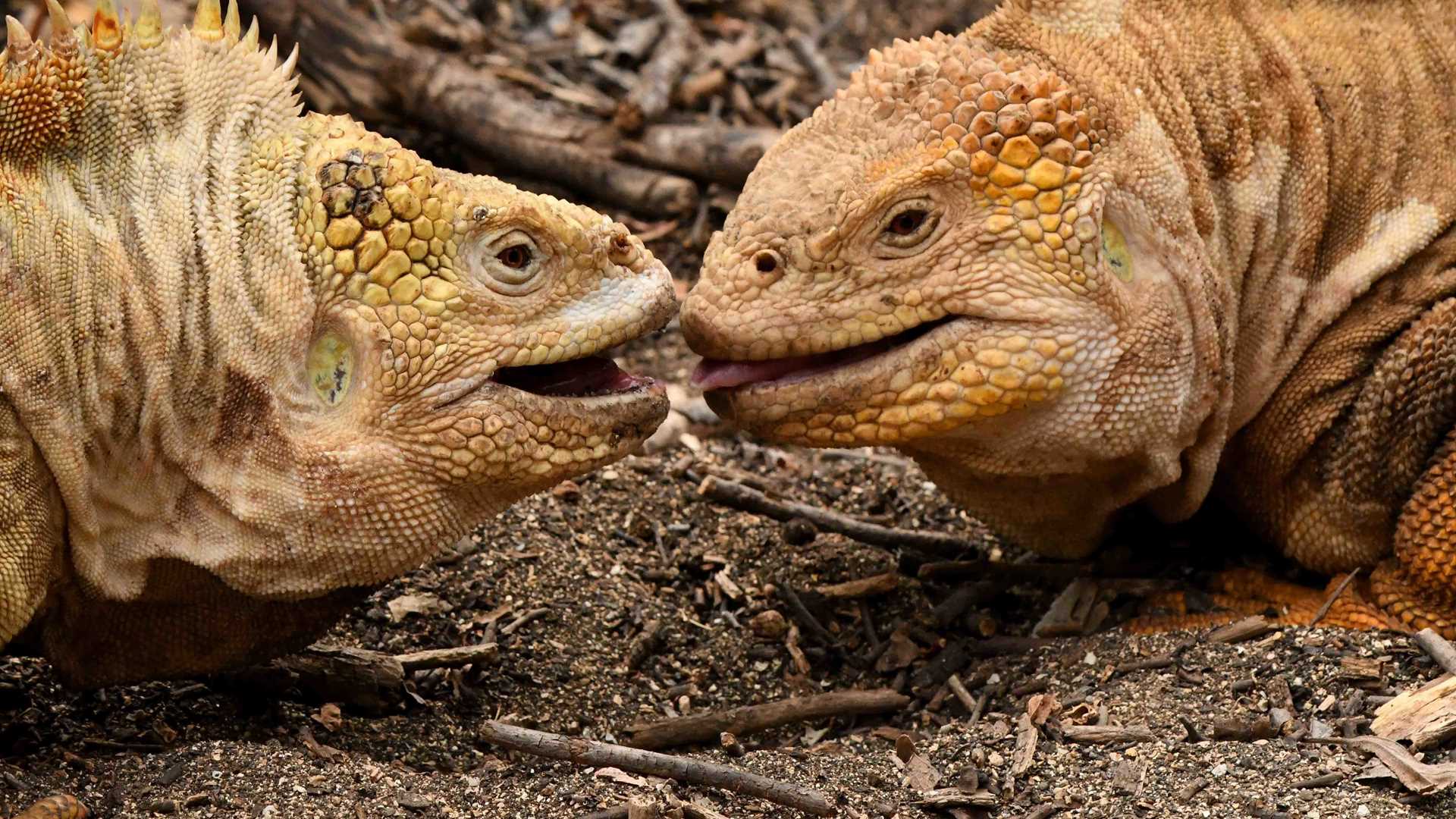This time of the year, the western part of the Galapagos is colder and chillier with changing conditions, but today is the exception to the rule. This morning was warm, and the ocean looked very calm. At 8 o’clock we were to disembark, and as we headed to the black beach of Urbina Bay we suddenly spotted a female humpback whale with its baby. It was great to have these cetaceans so close to us. These enormous creatures are seen from time to time, especially this time of the year, when they migrate from Alaska all the way down to South America to mate and have their babies. We were very lucky with this encounter.
After disembarking we walked around this incredible island. Isabela uplifted in 1954 when five kilometers of its coast rose several meters above sea level. Today the area is covered by vegetation, but you can see vestiges of it, such as sand dollars and sea worms attached to the rocks and big heads of white coral. Giant tortoises and the land iguanas are now the inhabitants of this place. We found a few of them along the trail. There were also different types of endemic vegetation, flowering mainly yellow and white colors. As another highlight, we spotted a very elusive bird that is nearly gone from the islands - the vermilion flycatcher. The Last time I saw one in this area was 18 years ago, so I was very happy with this great discovery! On our way back, the icing on the cake was a battle between two big male land iguanas. We sat on the trail and observed them while they fought.
We returned to the ship for lunch, and soon after headed to our next destination, Tagus Cove. This place has a lot of history and has been visited by the likes of pirates, sailors, and buccaneers. Each stopping along the way to make use of the giant tortoises as food for their long journeys. Charles Darwin also visited Tagus Cove. Now, we are ready to explore it! Some guests went to snorkel along the coast and swam with turtles and penguins. Many spotted numerous multicolor reef fish, rays, sharks and sea stars. Other guests preferred to kayak along the shoreline in search of sea birds, penguins, flightless cormorants and hawks. After our marine activities, we walked around Darwin Lake and took Zodiac rides. The landscape is covered in beautiful hues of gray. There is a big forest of palo santo trees. This time of the year they are dormant. During the rainy season, they bloom and become green with leaves.
Around 6 P.M. we returned to National Geographic Islander. The golden light was perfect for photography. The sun colored the sky with warm tones of red and orange. A great finale to a unique day in this inhospitable but surprising world.







